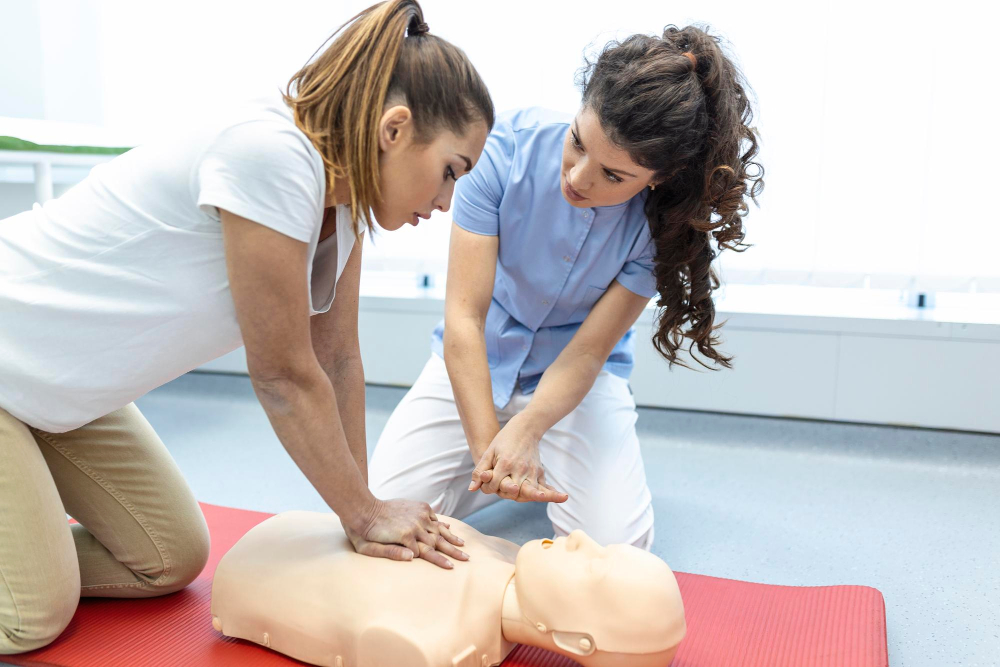Just imagine- A regular Tuesday afternoon, no sound nearby. Suddenly, a colleague slumps over, an elderly relative chokes, or a child experiences a massive cut. However, during the first 60 seconds, you are at the highest level of emergency medical care requirement. Every single second you spend hesitating is a minute lost to hope.
The question is not when you will face such an emergency but how well you will act to manage the situation. Being confident, swift, and managing the situation correctly is not just impressive but can save someone’s life. You need the skills, knowledge, and confidence to take charge, and that begins with the authentic First Aid Certificate course.
The Non-Negotiable Reality: Why You Can’t Afford to Wait
Many individuals consider first aid as a nice-to-have skill or something they will get around to eventually. This casual response is what costs lives. During cardiac emergencies, the survival chances drop 10% for every minute CPR is on hold. You are fighting against time, which is running fast.
- Cardiac Arrest Doesn’t Wait for Paramedics: The response times of ambulances are not always on time. If someone collapses due to instant cardiac arrest, instant Cardiopulmonary Resuscitation and use of the Automated External Defibrillator from a bystander is an important factor in determining if they survive. Being the person who knows how to use an AED is truly helpful.
- WHS Compliance is a Legal Requirement: For Australian workplaces, particularly those high-risk environments in construction or manufacturing, having a minimum number of staff with a valid First Aid Certificate course is not optional—it’s mandated under Work Health and Safety laws. Protecting your workers and fulfilling your duty of care starts with adequate training coverage.
- The Skills Expire, But the Accidents Don’t: First aid certification isn’t a permanent qualification. Medical guidelines, especially for resuscitation, are updated regularly by the Australian Resuscitation Council (ARC). Delaying your refresher means you might be using outdated or ineffective techniques. We recommend refreshing your core first aid every three years, and your CPR annually, to maintain the gold standard.
- Every Second Counts with Choking and Anaphylaxis: In cases of severe choking (airway obstruction) or an anaphylactic reaction, time isn’t measured in minutes; it’s measured in seconds. Knowing the precise steps—the correct back blows for choking, or the immediate, confident administration of an adrenaline auto-injector (EpiPen)—means the difference between full recovery and a tragic outcome.
The Training Gap: Why You Need Scenarios, Not Just Slides
Sitting in a lecture hall or clicking through a PowerPoint won’t equip you to handle the stress of a real-life medical crisis. Confidence in first aid is built on muscle memory and scenario practice. You need training that forces you to think, assess the scene, and prioritize care under pressure.
- Hands-On Trauma Management: Forget theory about bandages. In our course, you actively practice bandaging techniques, splinting suspected fractures, and applying the correct pressure for bleeding control. You learn to assess the seriousness of a wound and decide whether it needs simple bandaging or immediate paramedic intervention.
- Simulating the Shock: Accidents are messy, loud, and unpredictable. Our scenario training introduces those elements, forcing you to remain calm and systematic in a stressful environment. We use props and realistic situations to help you practice calling Triple Zero (000) and providing concise, clear information to emergency services while actively managing a casualty.
- Working with Specialised Equipment: You will get hands-on time with Essential medical equipment, including AED trainers and EpiPen training devices. This removes the “fear factor” associated with these tools, ensuring that if you find a defibrillator in a public space, you instinctively know how to use it without reading the instructions first.
- Environmental and Regional Risks: Whether you’re in an inner-city office or a remote worksite, we cover the specific risks relevant to your environment. This includes managing spinal injuries, administering the pressure-immobilisation technique for venomous bites, and treating serious environmental issues like electric shock.
Your Urgent Call to Action: Trust Training Aid Australia
This isn’t just about a certificate for your resume; it’s a moral imperative. When a life hangs in the balance, you want to be the person who is ready, skilled, and able to intervene. Getting your First Aid Certificate course should be a priority, not an item to defer.
At Training Aid Australia, our trainers are professionals with real-world experience, dedicated to ensuring every person leaves the course capable and confident. We provide nationally recognised, current, and highly practical training that cuts through the complexity and gives you exactly what you need: the ability to save a life.
Don’t wait for disaster to strike before you decide to be prepared. Book your level 2 first aid certificate today.
